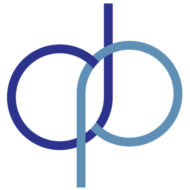Determination of kallikrein in urine with Chromogenic Substrate S-2266™
Measurement Principle
Kallikrein in urine hydrolyses the substrate H-D-Val-Leu-Arg-pNA (chromogenic substrate S-2266) and the rate of p-nitroaniline (pNA) formation increases linearly with increasing concentration of kallikrein up to 30 nkat/l. (See note). By adding aprotinin, a potent inhibitor of glandular kallikrein, to the sample blank, protease activities not inhibited by aprotinin as well as the colour from the urine itself can be subtracted.
urinary kallikrein
H-D-Val-Leu-Arg-pNA + H2O → H-D-Val-Leu-Arg-OH + pNA
Reagents
- Chromogenic Substrate S-2266, 25 mg Art. No. 82 04 80
Reconstitute the chromogenic substrate S-2266 (MW: 579.6) with 28.8 ml of distilled water. - Tris Buffer, pH 8.2 (25°C)
Tris 24.4 g (200 mmol/l)
Distilled water 800 ml
Adjust the pH to 8.2 at 25°C by adding an appropriate amount of 1 mol/l HCl (approximately 100 ml with distilled water. Fill up to 1000 ml with distilled water. The buffer, if not contaminated, is stable for two months at 2 -8°C. - Trasylol ® buffer
Trasylol (lyophilized aprotinin) is added to the buffer (Reagent 2) to a concentration of 20 KIU/ml. - Acetic acid, 50%
Specimen collection
As the kallikrein concentration may vary during the day, the total volume collected during 24 hours should be pooled. No drugs should be taken on the day of the sampling unless it is the aim to evaluate the influence of the drug in the kallikrein secretion. After mixing the urine pool a portion is transferred into a disposable plastic tube and kept at 2-8°C (less than 24 hours) or below -20°C. Just before the analysis, the urine sample is centrifuged and the supernatant is used.
Method
| Acid stopped method | Sample | Blank |
|---|---|---|
| Buffer | 500 µl | – |
| Trasylol | – | 500 µl |
| Incubate at 37°C | 5-10 min | 5-10 min |
| Urine | 400 µl | 400 µl |
| Mix and incubate at 37°C | 2-5 min | 2-5 min |
| Substrate (37°C) | 100 µl | 100 µl |
| Mix and incubate at 37°C | 30 min | 30 min |
| Acetic acid 50% | 100 µl | 100 µl |
Read the absorbance (A) of the sample against its blank in a photometer at 405 nm. The color is stable for at least 4 hours.
Calculation
The activity of kallikrein per litre of urine or excrete during 24 hours is calculated from the formula:
nkat/l = 159 x A
U/l = 9.55 x A
nkat/24hr = 159 x v x A
U/24hrs = 9.55 x v x A
A = absorbance
v = total volume in litre of urine collected during 24 hours.
Note:
If the kallikrein activity exceeds 30 nkat/l the urine should be diluted with the same volume of buffer and the result multiplied with 2.
Bibliography
- Claeson G et al. Designing of peptide substrates. Different approaches exemplified by new chromogenic substrates for kallikreins and urokinase. Haemostasis 7, 62-68 (1978).
- Claeson G et al. Methods for determination of prekallikrein in plasma, glandular kallikrein and urokinase. Haemostasis 7, 76-78 (1978).
- Amundsen E et al.: Methods for the determination of glandular kallikreins by means of a chromogenic tripeptide substrate. In KININS-II. Biochemistry, Pathophysiology and Clinical aspects. Ed., Fujii S et al. Plenum Press, 83-95 (1979).
- Bönner G and Martin-Grez M. Measurement of kallikrein activity in urine of rats and man using a chromogenic tripeptide substrate. J Clin Chem Clin Biochem 19, 165-168 (1981).
- Friberger P et al. Chromogenic substrates for kallikreins and related enzymes. In: Recent Progress on Kinins. Ed., Fritz H et al. International Conference “Kinin 81 Munich”, p 83 (1981).
- Meani A et al. A kinetic assay for human urinary kallikrein determination. Enzyme 33, 89-93 (1985).
- Chen YM et al. Diurnal variation in water, sodium and potassium excretion in primary glomerulonephritic patients and its relation to diurnal kallikrein excretion. J Formos Med Assoc 89, 1052-1056 (1990).
- Tsai TJ et al. Effect of sodium depletion on urinary excretion of active and inactive kallikrein in glomerulonephritic patients. J Formos Med Assoc 90, 105-108 (1991).
- Tsai TJ et al. Urinary kallikrein excretion in chronic renal disease with respect to salt intake and renal reserve. J Formos Med Assoc 90, 525-530 (1991).
- Tsai TJ et al. Urinary kallikrein excretion in non-insulin-dependent diabetes mellitus. J Formos Med Assoc 91, 725-728 (1992).
- Helili K et al. Dynamics of kallikrein activity in different biological fluids of pregnant animals. Agents Actions Suppl 38 (Pt 1), 114-120 (1992).
